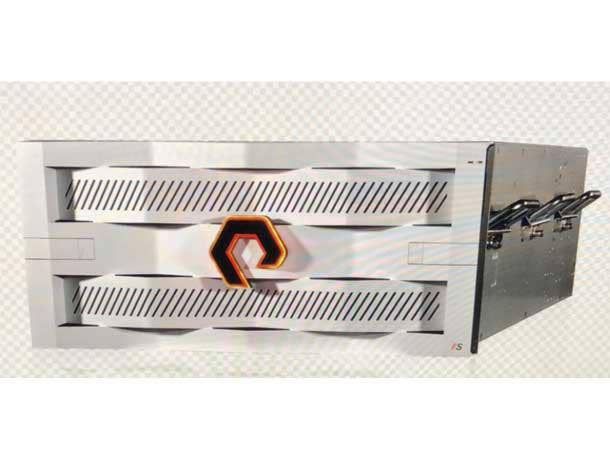Pure Storage’s New FlashBlade//S: Decouples Compute, Capacity
‘With previous versions of FlashBlade, you could only scale by buying more of both. Now you can mix and match performance and capacity, buy what you need when you need it,’ says Justin Field, technical solutions architect for Pure Storage partner World Wide Technology.

Flash storage developer Pure Storage Wednesday unveiled a new modular version of its FlashBlade file and object storage array that for the first time disaggregates the compute and capacity to allow customers to scale them separately as needed.
The new array was introduced at the Pure//Accelerate Digital techfest22 conference being held this week in Los Angeles.
The new FlashBlade//S:, the latest in Pure Storage’s file and object storage FlashBlade array series, is based on the same low-cost QLC flash technology behind the company’s FlashArray//C: block storage array, said Pure Storage CTO Rob Lee.
[Related: Pure Storage CEO: Rivals ‘Play A Commodity Game’]
“FlashBlade//S: is a massive step forward in modularity, flexibility, performance, scale and all the things people like about FlashBlade,” Lee told CRN. “It’s the industry’s first all-QLC, high-performance file system.”
It is also Pure Storage’s first array that decouples the compute power from the capacity, which means customers can scale either or both independently, depending on the workload, Lee said.
The new FlashBlade//S: is also at the heart of Pure Storage’s new AIRI//S, the newest version of the AI-ready infrastructure the company designed in conjunction with Nvidia.
By decoupling the compute and capacity, Pure Storage is taking a big step with its FlashBlade//S: in meeting customers’ requirements, said Justin Field, technical solutions architect for World Wide Technology, a St. Louis-based solution provider and early Pure Storage channel partner.
“This move into composable infrastructure is exciting, with individual scaling of performance and capacity,” Field told CRN. “With previous versions of FlashBlade, you could only scale by buying more of both. Now you can mix and match performance and capacity, buy what you need when you need it.”
FlashBlade//S: is a very useful flexible unified flash storage device for file and object storage data, Field said.
“There’s no need to buy a lot of hardware up front,” he said. “Pure has had good experience with its supply chains and can get the hardware customers need. So customers can just buy what they need now and add more later.”
FlashBlade//S: is also unique in that it allows capacity to be moved between blades and arrays as needed, Field said.
“If you need more performance and have the capacity, you can just buy a new blade and add more capacity to the new blade,” he said. “This provides the freedom to adjust on the fly. Before, the NAND memory was on the blade itself.”
Jeffrey Fonke, primary storage practice manager at World Wide Technology, told CRN that FlashBlade//S:, with its QLC memory, has a low price point that opens new market opportunities for file and object storage just like the FlashArray//C: did for block storage.
It also helps customers with their environmental, social and governance (ESG) initiatives, Fonke said.
“We’ve turned up an entire practice around ESG,” he said. “Customers are concerned about power consumption and efficiency. ESG is gaining momentum. Pure Storage has done a good job of listening to customers’ ESG concerns.”
Pure Storage’s new FlashBlade//S: will be a value driver for customers, said Jerrod Janes, vice president of technical presales for the Advanced Solutions Group of SHI International, a Somerset, N.J.-based solution provider and Pure Storage channel partner.
“It gives customers the freedom they need to purchase the right technology,” Janes told CRN. “And combined with Pure Storage’s Evergreen support, customers get to buy what they need today and scale up as needed in the future. This lets customers optimize their investment in their technology.”